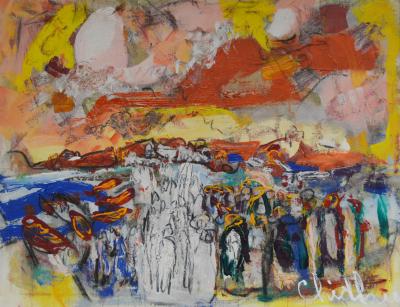Hans Hofmann: The Nature of Abstraction
Nature speaks to us in space, color, and light. |
— Hans Hofmann |
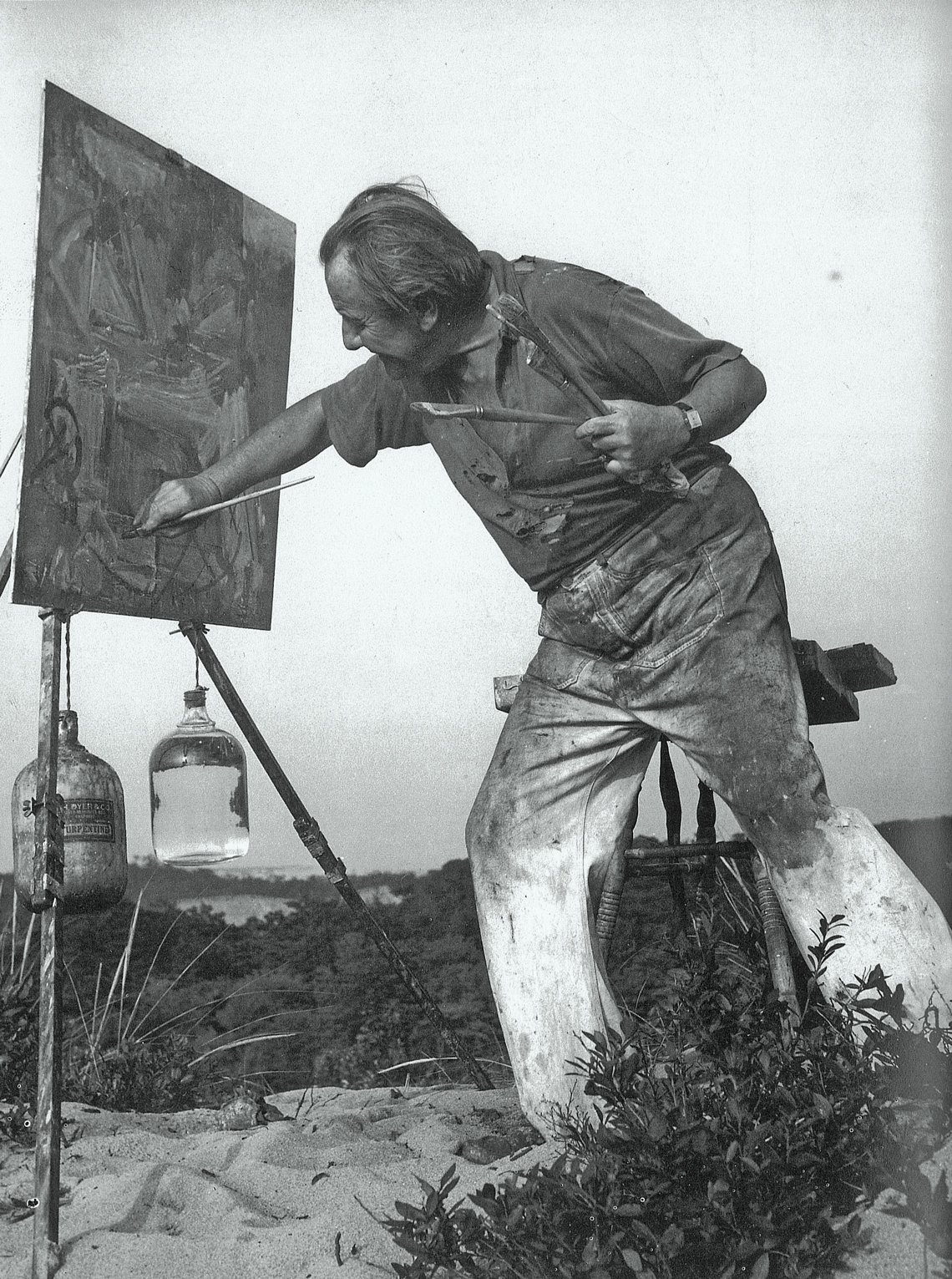 | |
Herbert Matter, Hans Hofmann Painting in the Dunes, 1942. © Herbert Matter Estate. Photograph courtesy of Staley-Wise Gallery, New York. |
Hans Hofmann (1880–1966), a central figure in the story of post-World War II abstract art, founded famously influential art schools in New York and Provincetown, Massachusetts, where he taught the principles of modern art and individual creative expression for more than twenty years, helping to define a new generation of American artists. By the time of his death just weeks before his eighty-sixth birthday, Hofmann also had achieved global recognition as a painter. He was distinguished for his vibrant use of color and his experimental approaches to technique and composition, always challenging the visual and expressive boundaries of traditional painting. In particular, Hofmann was known for his dedication to nature as a deep wellspring of creative inspiration. In nearly fifty paintings and works on paper from 1930 through to the end of his life in 1966, Hans Hofmann: The Nature of Abstraction, was exhibited at the Peabody Essex Museum, Salem, Massachusetts in 2019–2020, presenting a comprehensive and eye-opening examination of Hofmann’s prolific career.
The exhibition began with landscapes and still lifes from the mid-1930s—works that mark the artist’s return to painting after enduring years of creative disruption caused by two World Wars. At the invitation of the University of California, Berkeley, Hofmann was able to escape the Nazi occupation of his native Germany and build a new life in America. He brought with him the vital spirit of artistic breakthroughs—Cubism, Fauvism, and Expressionism—which he had experienced directly in avant-garde circles in early twentieth-century Munich and Paris. Organized in thematic sections, the exhibition at PEM invited visitors to dive into Hofmann’s foundational principles of line, shape, color, and his famous phrase, “push and pull,” as demonstrated by his own painterly development. His majestic late color plane abstractions, which command the final sections of the exhibition, reveal Hofmann’s full resolve to tap creative dimensions inspired by nature.
 |
 |
Hans Hofmann (1880–1966), Untitled, 1943. Gouache on paper, 17½ x 24. Private collection, California. With permission of the Renate, Hans & Maria Hofmann Trust / Artists Rights Society (ARS), New York. |
The landscape of Provincetown continually inspired Hofmann, who used the topography of his immediate environment as a starting point from which to navigate through a range of pictorial expressions and exploration. He often painted standing on the dunes and drew on the rich colors he saw there—yellows, purples, blues, and greens—to evoke the vibrant energy of the coastline.
 |
 |
Hans Hofmann (1880–1966), Still Life, 1936. Oil on plywood, 13¾ x 17-5⁄16 in Williams College Museum of Art; Gift of William Alexander, Class of 1932. With permission of the Renate, Hans & Maria Hofmann Trust / Artists Rights Society (ARS), New York. |
As a young painter in Paris from 1904 to 1914, Hofmann immersed himself in an energetic cultural environment of modern art. When he returned to his painting practice in the 1930s, Hofmann sampled the stylistic techniques he experienced and practiced in Europe, such as the bold use of expressive colors by Matisse and the compressed and fractured spatial dimensions of Cubism.
 |
 |
Hans Hofmann (1880–1966), The Wind, 1942. Oil, automotive lacquer, gouache, and India ink on board, 43⅞ x 27¾ inches. UC Berkeley Art Museum and Pacific Film Archives; Gift of the artist (1965.16). With permission of the Renate, Hans & Maria Hofmann Trust / Artists Rights Society (ARS), New York. |
While teaching and painting in Provincetown and New York for more than two decades, Hofmann actively refined his painting practice by experimenting with different techniques in order to create pictorial sensations of movement and spatial depth. He adhered to a set of core principles as the foundation for dynamic artistic expression: line, shape, color, and “push and pull.” In the early 1940s Hofmann tested different paint applications, including dripping paint directly onto his surfaces. Turning the compositions as he worked, he created dizzying realms of swirling lines and colors.
 |
 |
Hans Hofmann (1880–1966), Phantasia, 1944. Oil on panel, 31 x 43 inches. Collection of Leslie Gales and Keith Ray, Toronto. With permission of the Renate, Hans & Maria Hofmann Trust / Artists Rights Society (ARS), New York. |
In Phantasia, Hofmann explores line in tandem with shape, as in the black linear brushwork and circuitous blue-green hooked shape anchored in the center of the painting through their interaction. Black and red streaks balance the bottom right and top left of the otherwise seemingly chaotic composition. This energetic interplay of lines and forms evokes a sense of movement, of shapes expanding and contracting in space. As Hofmann continued to refine his techniques, line all but disappeared from his work in exuberant favor of broad, colorful shapes, eventually leading to resolute abstraction.
 |
 |
Hans Hofmann (1880–1966), Morning Mist, 1958. Oil on canvas, 55⅛ x 40⅜ inches. UC Berkeley Art Museum and Pacific Film Archives; Bequest of the artist (1966.45). With permission of the Renate, Hans & Maria Hofmann Trust / Artists Rights Society (ARS), New York. |
In 1957, Hofmann closed his schools and turned full-time to his painting practice for the first time in more than forty years. In this last decade of his life, he produced an astounding and prodigious body of majestic paintings. His works of the late 1950s, such as Morning Mist, in title and expression, largely referred to conditions in the natural world. However, rather than pictorial reflections, Hofmann’s late large-scale abstractions evoked sensations intrinsic to nature, achieving his lifelong artistic goal to translate the visual and spiritual essences of the forces of nature.
 |
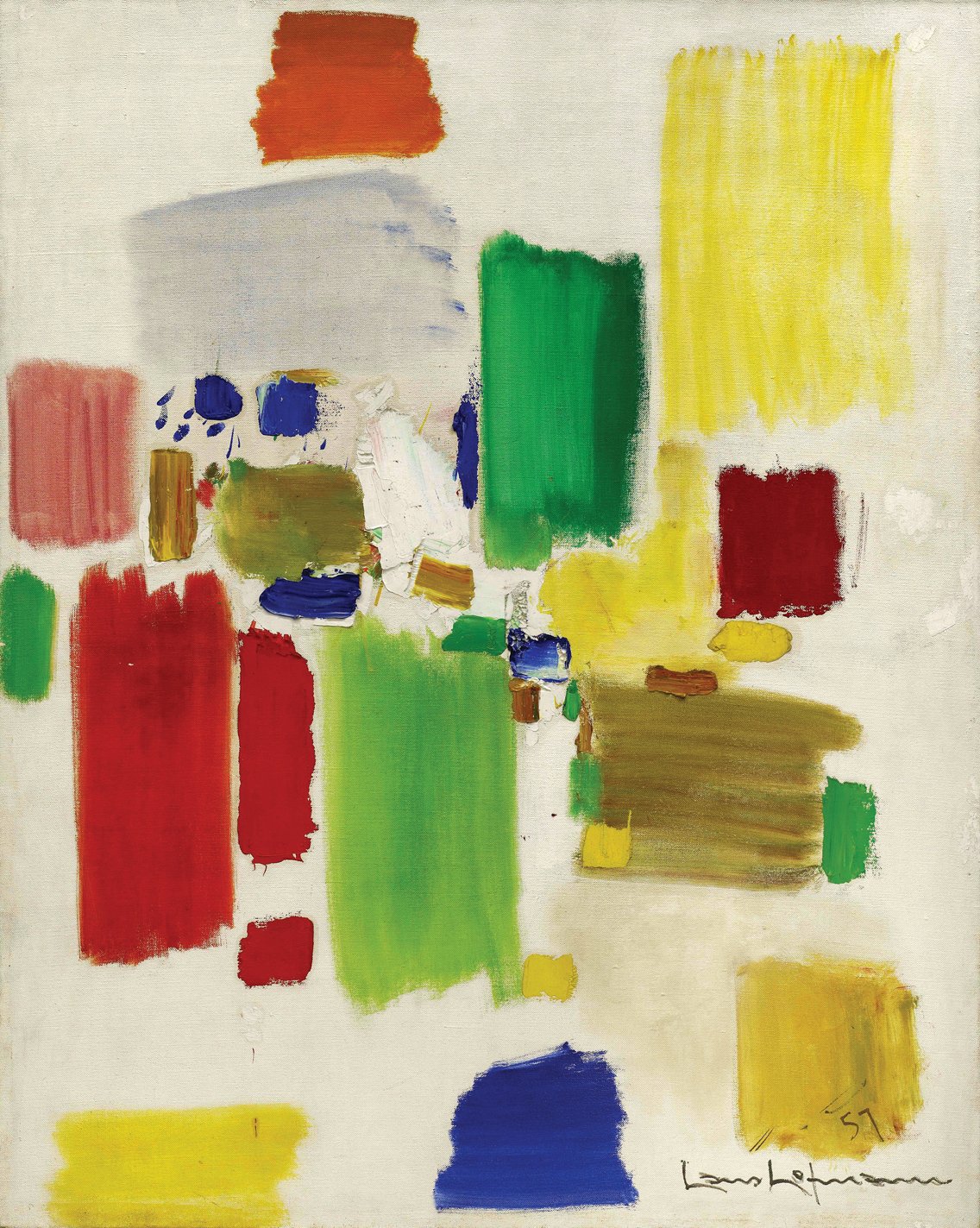 |
Hans Hofmann (1880–1966), Sparks, 1957. Oil on canvas, 60 x 48 inches. The Museum of Fine Arts, Houston, bequest of Caroline Wiess Law (2004.24). With permission of the Renate, Hans & Maria Hofmann Trust / Artists Rights Society (ARS), New York. |
In Sparks, Hofmann applied thick paint with a palette knife, pushing his color planes around and about the picture plane. For Hofmann, making a painting was a physical act. Using a medley of tools and applications—brush, palette knife, splatters, drips, and fingerprints—he worked quickly and forcefully, aiming to finish a canvas “in one sweep.” Often in a single composition he employed multiple types of pigments, such as gouache, oil, and ink, exploiting their inherent material differences toward enhancing the visual richness of the surface. The central area of Sparks is crowded with colorful shapes. Horizontal and vertical strokes of color, painted in different densities and textures, create an animated mosaic atop a neutral background. Here Hofmann grounds his vibrant color planes, which punctuate the surface and vibrate in constant flux with each other in a state of stable equilibrium.
 |
Push and pull are expanding and contracting forces… |
—Hans Hofmann |
 |
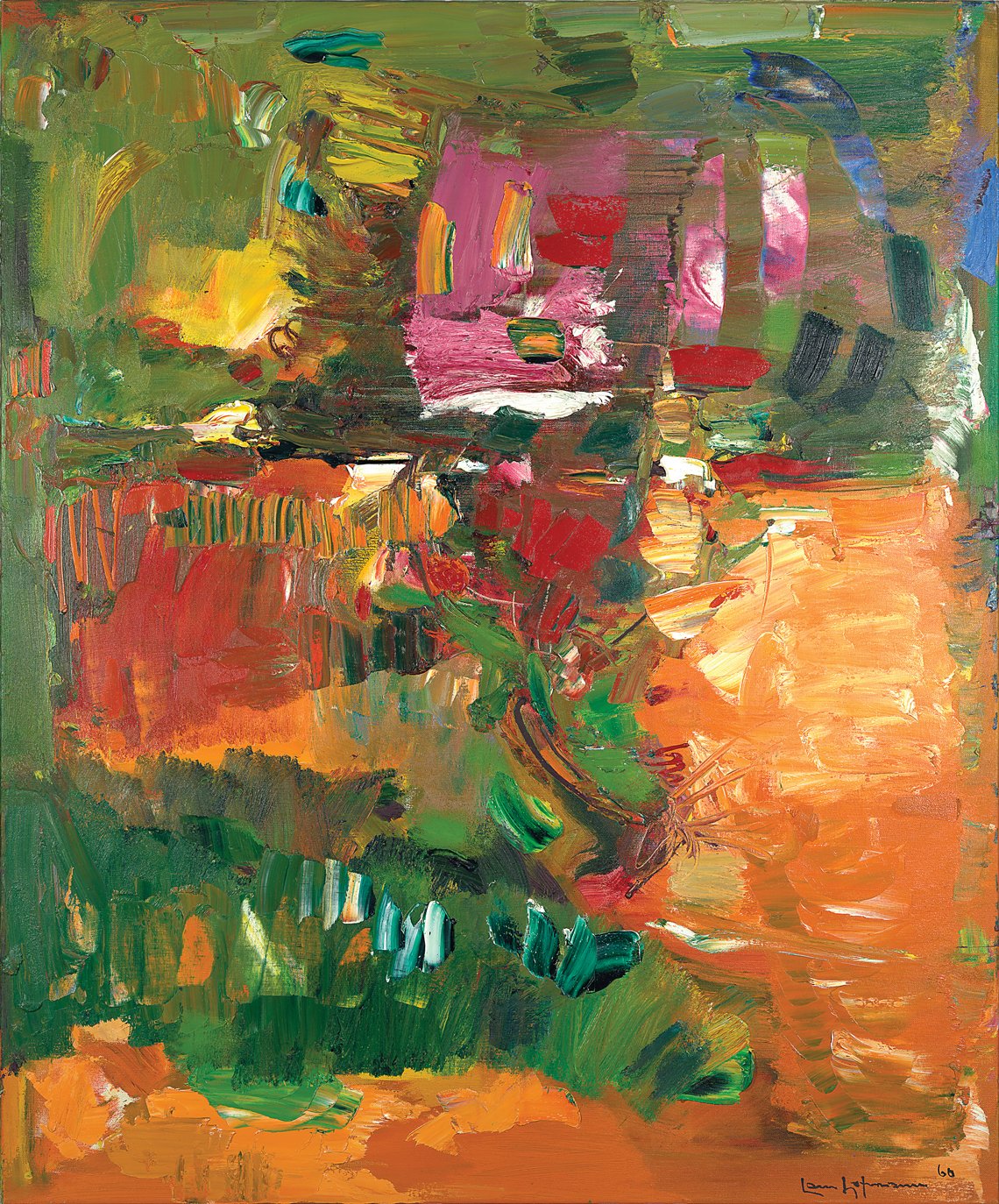 |
Hans Hofmann (1880–1966), In the Wake of the Hurricane, 1960. Oil on canvas, 72¼ x 60 inches. UC Berkeley Art Museum and Pacific Film Archives; Gift of the artist (1965.6). With permission of the Renate, Hans & Maria Hofmann Trust / Artists Rights Society (ARS), New York. |
On painting abstractly from nature, Hofmann said, “Nature stimulates in me the imaginative faculty to feel the potentialities of expression which serve to create pictorial life.” The dynamic forces of nature influenced the energetic ways in which the artist approached the canvas. One such force was Hurricane Donna, which hit Massachusetts on September 12, 1960, with greater than 140-mile-per-hour winds and caused significant damage in Provincetown. Hofmann expressed the storm’s rapid motion and energy here with agitated short green brushstrokes, but grounded those vibrations in a sense of calm and stillness by applying swaths of warmer orange and yellow tones.
 |
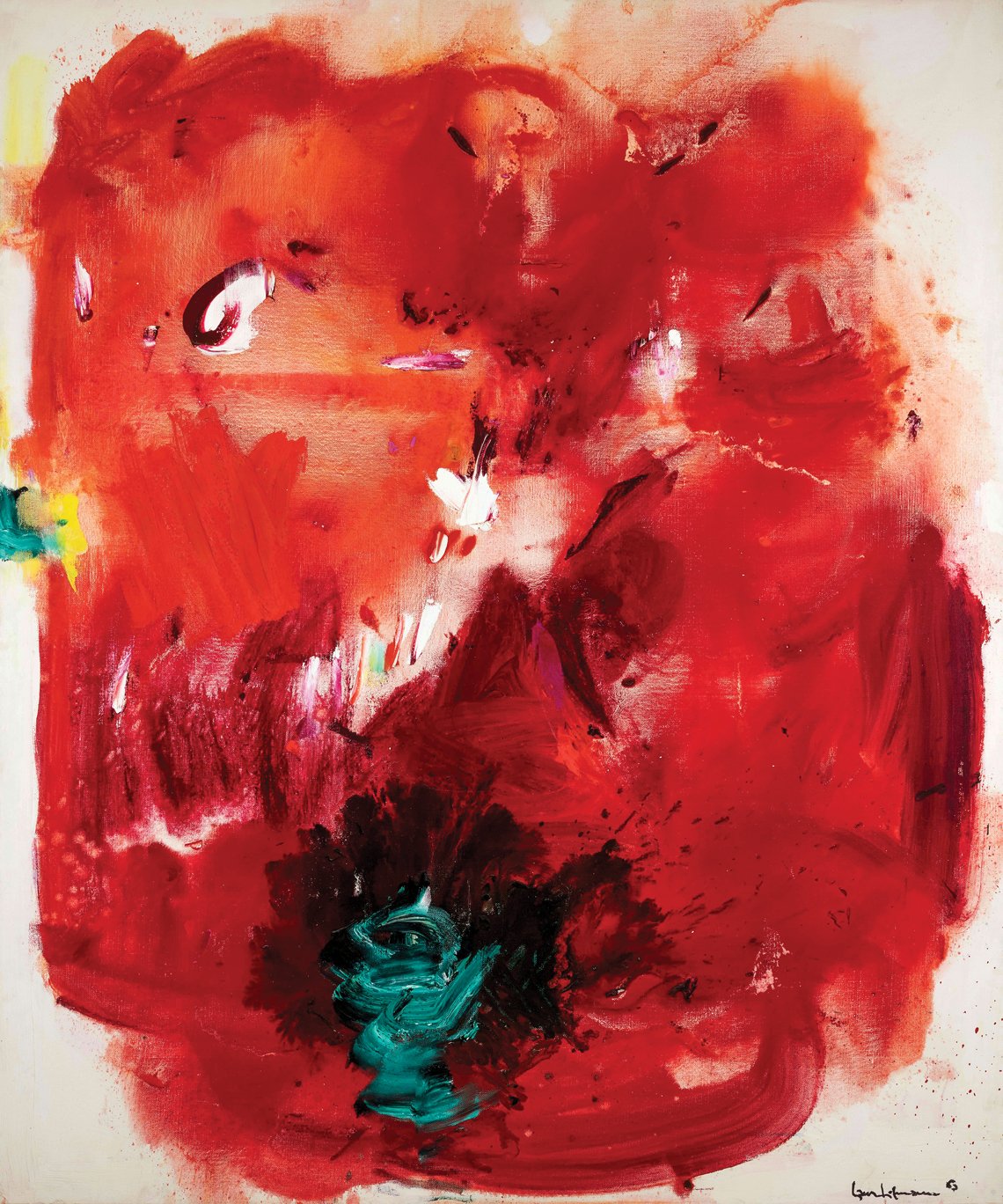 |
Hans Hofmann (1880–1966), Rubasse (A Beautiful Variety of Rock Crystal), 1963. Oil on canvas, 72¼ x 60 inches. Private collection, Florida. With permission of the Renate, Hans & Maria Hofmann Trust / Artists Rights Society (ARS), New York. |
“Painting to me means forming with color,” Hofmann remarked to a fellow artist in 1950. As his work evolved toward abstraction, Hofmann increasingly structured his compositions solely by means of color arrangement and relational value, rather than representational line and shape. He explored emotive and sensorial qualities of color, particularly in relation to light. In Rubasse, titled after the ruby-red quartz, Hofmann evoked a sense of light glimmering in and out of a brilliant crimson ground, like the faceted surface of a crystal. Hofmann often titled his works after they were completed, allowing the process of painting itself to reveal potential associations and meanings.
 |
A work is finished when all parts involved communicate themselves, so that they don’t need me. |
—Hans Hofmann |
 |
 |
Hans Hofmann (1880–1966), Magnum Opus, 1962. Oil on canvas, 84⅛ x 78⅛ inches. UC Berkeley Art Museum and Pacific Film Archives; Gift of the artist (1963.7). With permission of the Renate, Hans & Maria Hofmann Trust / Artists Rights Society (ARS), New York. |
Hofmann argued that the picture plane should be activated by color and shape. His famous phrase “push and pull” refers to his method of using contrasting and sometimes overlapping planes of color and texture to create a sense of depth. This concept is boldly exemplified in Magnum Opus. While an intense yellow rectangle sharply advances from its surrounding sea of red, a smaller blue rectangle to the left coolly recedes into depth, creating a visual sensation of simultaneous expansion and contraction. Hofmann harnessed the contrasting forces of precisely edged color planes integrated into gestural backgrounds as a means to dynamically animate the painting’s surface with rhythm and movement.
 |
 |
Hans Hofmann (1880–1966), The Castle, 1965. Oil on canvas, 60⅛ x 40⅛ inches. UC Berkeley Art Museum and Pacific Film Archives; Gift of the artist (1966.4). With permission of the Renate, Hans & Maria Hofmann Trust / Artists Rights Society (ARS), New York. |
The Castle is one of Hofmann’s last known works, made in his mid-eighties and shown in his last exhibition, held at Kootz Gallery, February 1–26, 1966 which opened just weeks before his death. A culmination of his core principles, this reductive painting, in which the raw canvas occupies much of the composition, is energized by a contrasting zone of vibrant color planes and squiggles, which Hofmann produced by mixing pigments directly on the surface, as if a palette, and squeezing paint straight from the tube. Line, shape, color, and push and pull crescendo in the work, creating an independent pictorial reality—what Hofmann would call a “spiritual synthesis.”
 |
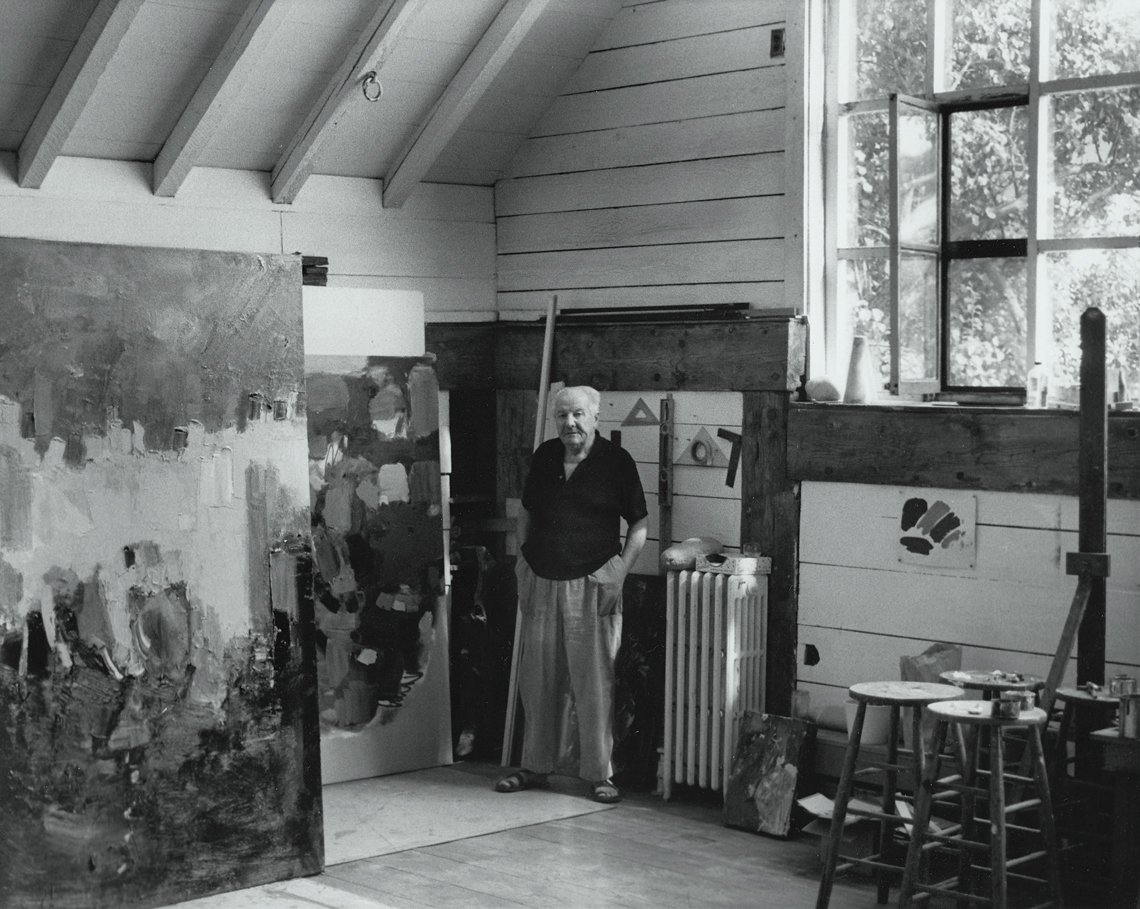 | |
Hans Hofmann in the studio in Provincetown, Mass., 1959. Photograph by Marvin P. Lazarus. |
The exhibition was organized by and premiered at the University of California Berkeley Art Museum and Pacific Film Archive (BAMPFA), which holds the world’s most extensive museum collection of Hofmann paintings. In its subsequent presentation at PEM, the exhibition followed the artist’s own journey from America’s West Coast to the Eastern seaboard. It was on the North Shore of Massachusetts that Hofmann picked up his paints and brushes again while teaching in Cape Anne’s Gloucester, and it was in Provincetown, on the tip of Cape Cod, that he founded his own art school. Provincetown’s historically influential art colony created a sense of belonging for the artist, where he found the kind of artistic community he had lost in wartime Europe and an ideal studio located atop the dunes, close to nature.
Lucinda Barnes was guest curator of Hans Hofmann: The Nature of Abstraction and curator emerita at UC Berkeley Art Museum and Pacific Film Archives. Lydia Gordon was associate curator for exhibitions and research at the Peabody Essex Museum and coordinating curator of the exhibition.
This article was originally published in the Winter 2019 issue of Antiques & Fine Art magazine. AFA was affiliated with Incollect.com.


















